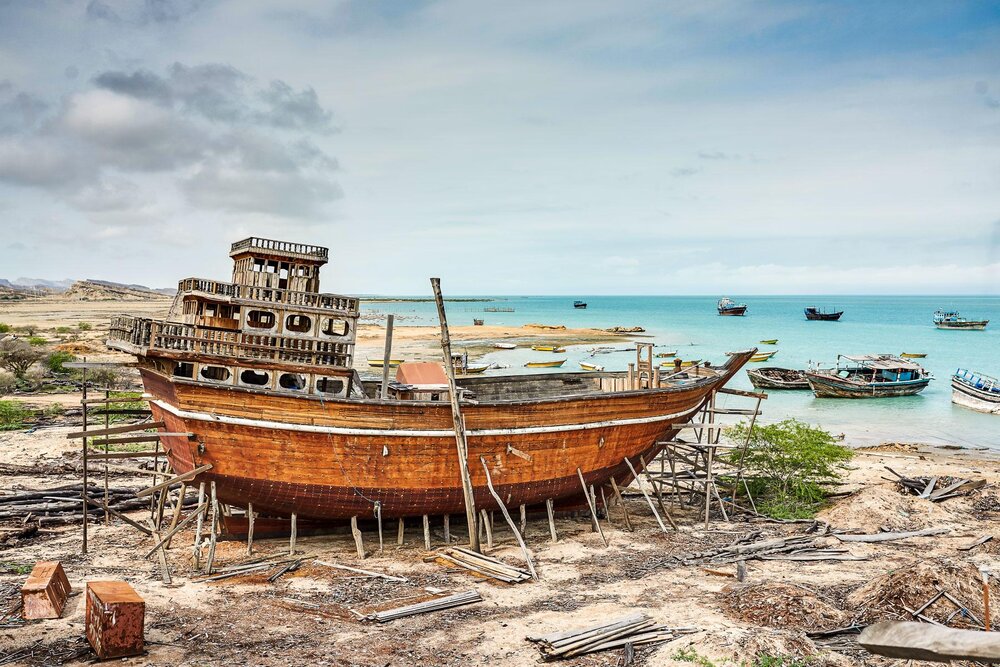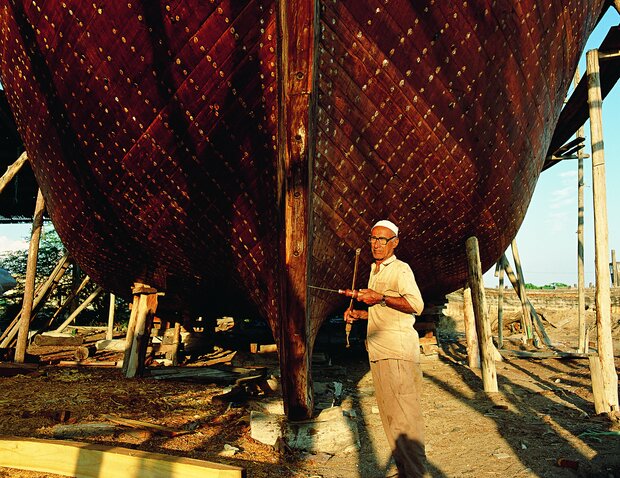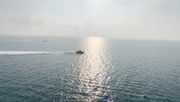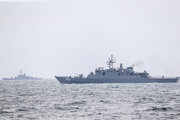If you are planning to travel to the southernmost parts of the country, we suggest to visit the Persian Gulf in trace of seeing the process of crafting and sailing traditional Lenj boats, which has passed down from father to son. The hand-built vessels are used for sea journeys, trading, fishing and pearl diving.
Entering a shipyard is like stepping back into the ancient times, with some local artisans working on gigantic timbers to shape a reliable vessel.
Such expertise of the Iranian shipbuilders was registered on UNESCO Intangible Cultural Heritage list in 2011 under the tile “Traditional skills of building and sailing Iranian Lenj boats in the Persian Gulf.”
Lenjes were initially used for long routes, for instance to China and Africa, but now, locals usually embark on shorter journeys in the Persian Gulf. Nowadays, many goods such as electronics and home appliances, textiles and foodstuff are transported between Iranian ports, Dubai and Oman.
It is said that a Lenj takes some two years to build, depending on its size that reveals portions of its hardship, care and detail of the craftsmanship. Moreover, different kinds of wood are needed for the various components that are mainly imported from India and Africa as there are no forests in southern Iran.
Iran’s history of seagoing is deep rooted in time. As of nearly the sixth century BC, the northern sides of the Persian Gulf became dominated by a succession of Persian empires including the Median, Achaemenid, Parthian and Sassanid empires. Under the leadership of the Achaemenid king Darius the Great (Darius I), who reigned from 522 to 486 BC, Persian ships found their way to the Persian Gulf, laying a strong foundation for maritime petrol and navigation in the region.
For avid travelers, it is also recommended to go on a tour to the Qeshm Island, where traditional boat-makers are making a living. Situated at the narrowest part of the Straits of Hormuz, a waterway separating Iran and Oman, the sun-scorched island is fringed with biologically diverse mangrove forests, attractive beaches and some 60 Bandari villages.
Qeshm features geologically eye-catching canyons, hills, caves and valleys, most of which are protected as part of the UNESCO-tagged Qeshm Island Geopark, itself a heaven for nature-lovers.
According to UNESCO, the traditional knowledge surrounding Lenjes includes oral literature, performing arts and festivals, in addition to the sailing and navigation techniques and terminology and weather forecasting that are closely associated with sailing, and the skills of wooden boat-building itself.
Iranian navigators could locate the ship according to the positions of the sun, moon and stars; they used special formulae to calculate latitudes and longitudes, as well as water depth. Each wind was given a name, which along with the color of water or the height of waves was used to help forecast the weather. Specific music and rhythms also constituted inseparable parts of sailing in the Persian Gulf, with sailors singing particular songs while working.
The UN cultural body has mentioned that heritage is “in need of urgent safeguarding”, meaning continuing this tradition of shipbuilding is not easy, and the craftsmanship is still somewhere between tradition and modernity.
Over the past couple of years, US-led sanctions and its related economic boycott of Iran has sharply increased the cost of wood and engines. One more challenge has been the sharp decline in the number of locals with the knowledge of building and maintenance a Lenj.

Nowadays, the community of such practitioners is getting smaller and smaller; mainly comprising elderly people. Wooden Lenjes are being replaced by cheaper industrial vessels, yet Lenj construction shipyards are being transformed into repair yards for older Lenjes.
Some cultural heritage experts have voiced wariness about the fate of traditional knowledge of sailing in the Persian Gulf, saying its associated philosophy, ritualistic background and culture may be fading away.
MNA/TT



























Your Comment